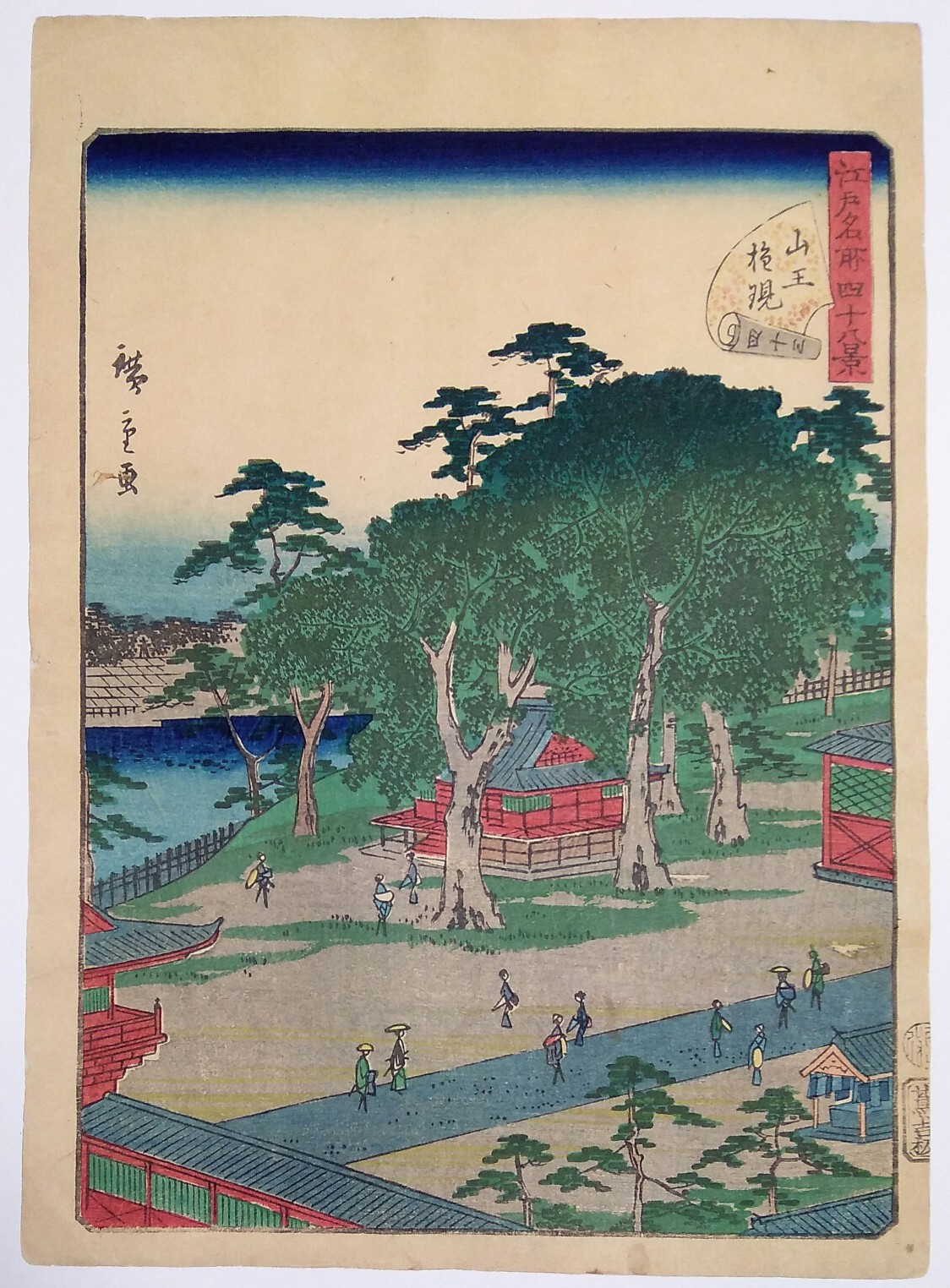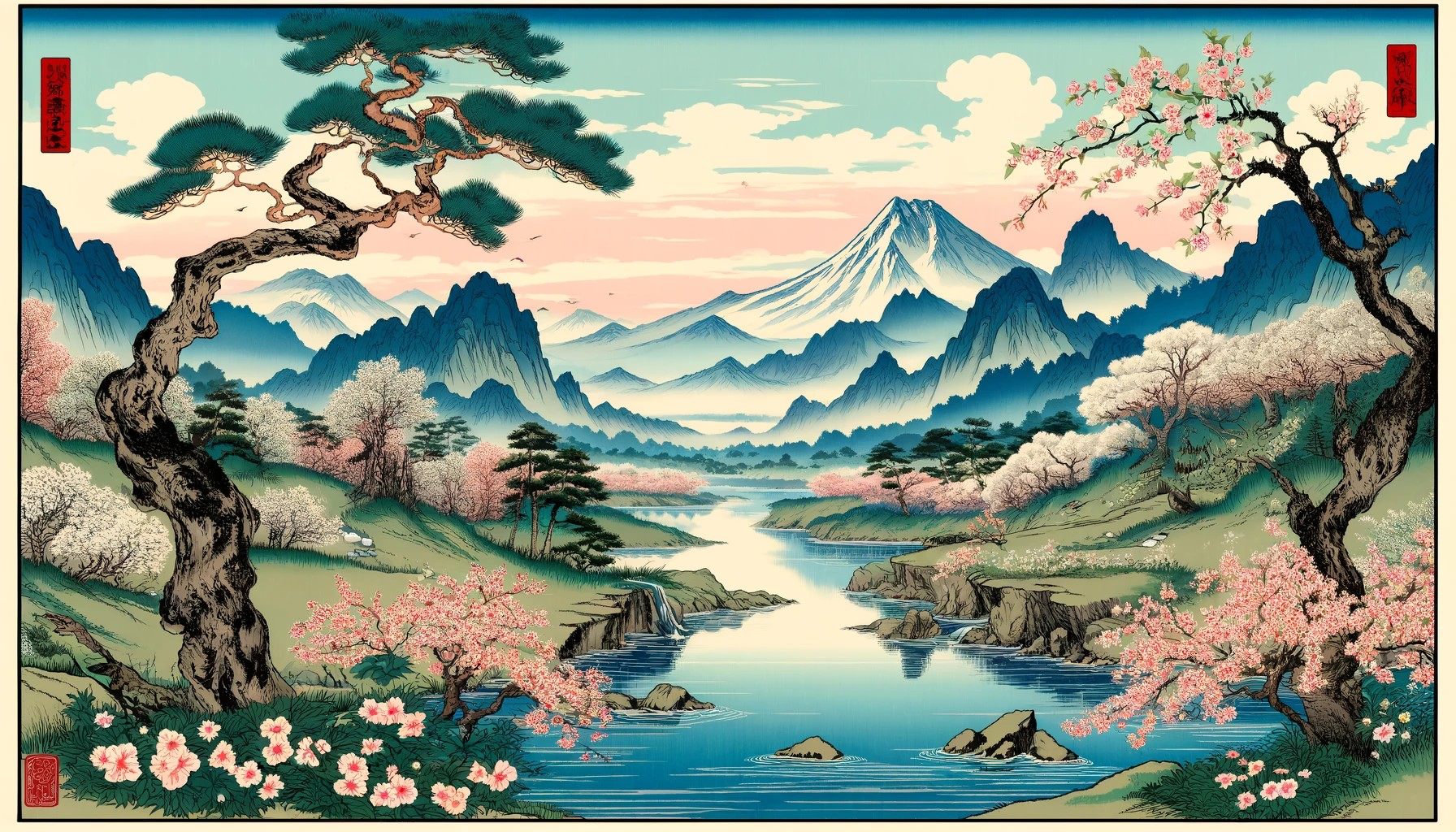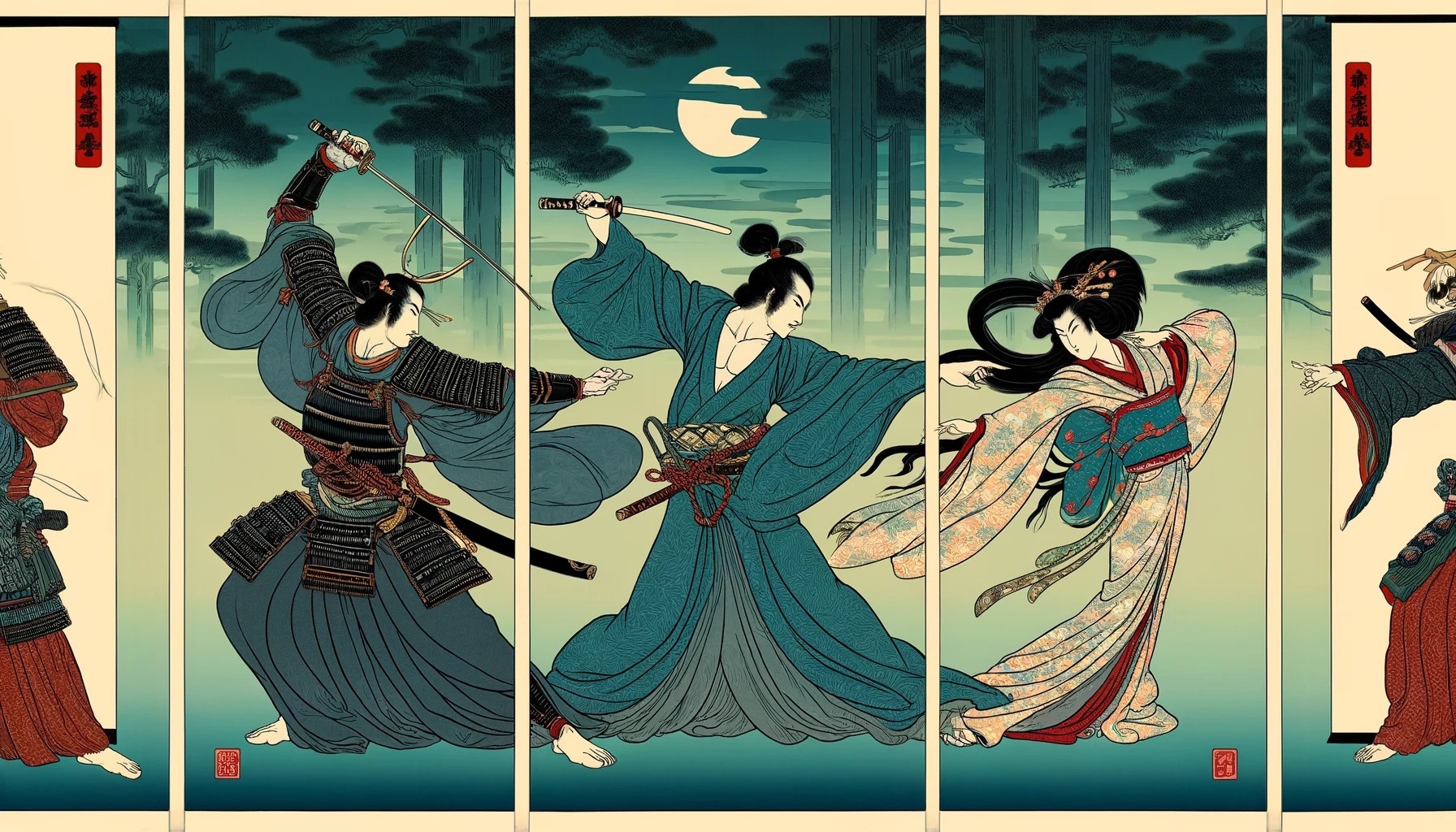
Author: Utagawa Hiroshige II (二代目広重).
Subject: Sannō Gongen shrine (Sannō Gongen, 山王権現).
Series: Forty eight famous views of Edo (Edo meisho yonjū hakkei, 江戸名所四十八景).
Number: 43/48.
Genre: meisho-e (名所絵), fūkei-ga (風景画).
Size: medium (chūban, 中判) 25,7cm x 18,2cm (10,11 x 7,16 inches).
Publisher: Tsutaya Kichizō (蔦屋吉蔵), here as Tsutakichihan (蔦吉版).
Period: 1860 ~ 1861.
Trimmed: yes.
Backed: no
Code: UGHII01011
Condition: good condition. Vivid and clear colors. No presence of folds, wrinkles, repair marks, or holes.
Minor stains. It has not been backed.
Located in Nagatacho (永田町), Chiyoda Ward (千代田区), Tokyo, this shirne holds a past intricately connected to the Meiji
Restoration period.
Back in the late 15th century, during the Bunmei era, Ota Dokan (太田道灌) led the shrine's relocation from Kawagoe (川越)
in Musashi Province to the heart of Edo Castle, as its guardian and as the ancestral deity (ubusunagami / 産土神)
of the Tokugawa family.
It is here that the renowned "Sanno Festival" found its roots, dating back to 1615. This festival, a spectacle of grandeur,
took place every year, alternating with the Kanda Festival at Kanda Shrine. Held on the 15th day of June, achieved a place of
prominence as one of Edo's three major festivals, drawing the attention and attendance of the Tokugawa shogunate, earning
monikers like "Kojimachi Sanno" (麹町山王) or simply "Sanno."
On the 2nd year of the Meiji era (1869) the shrine underwent a name change, emerging as Hie Shrine (Hiei jinja / 日枝神社).


